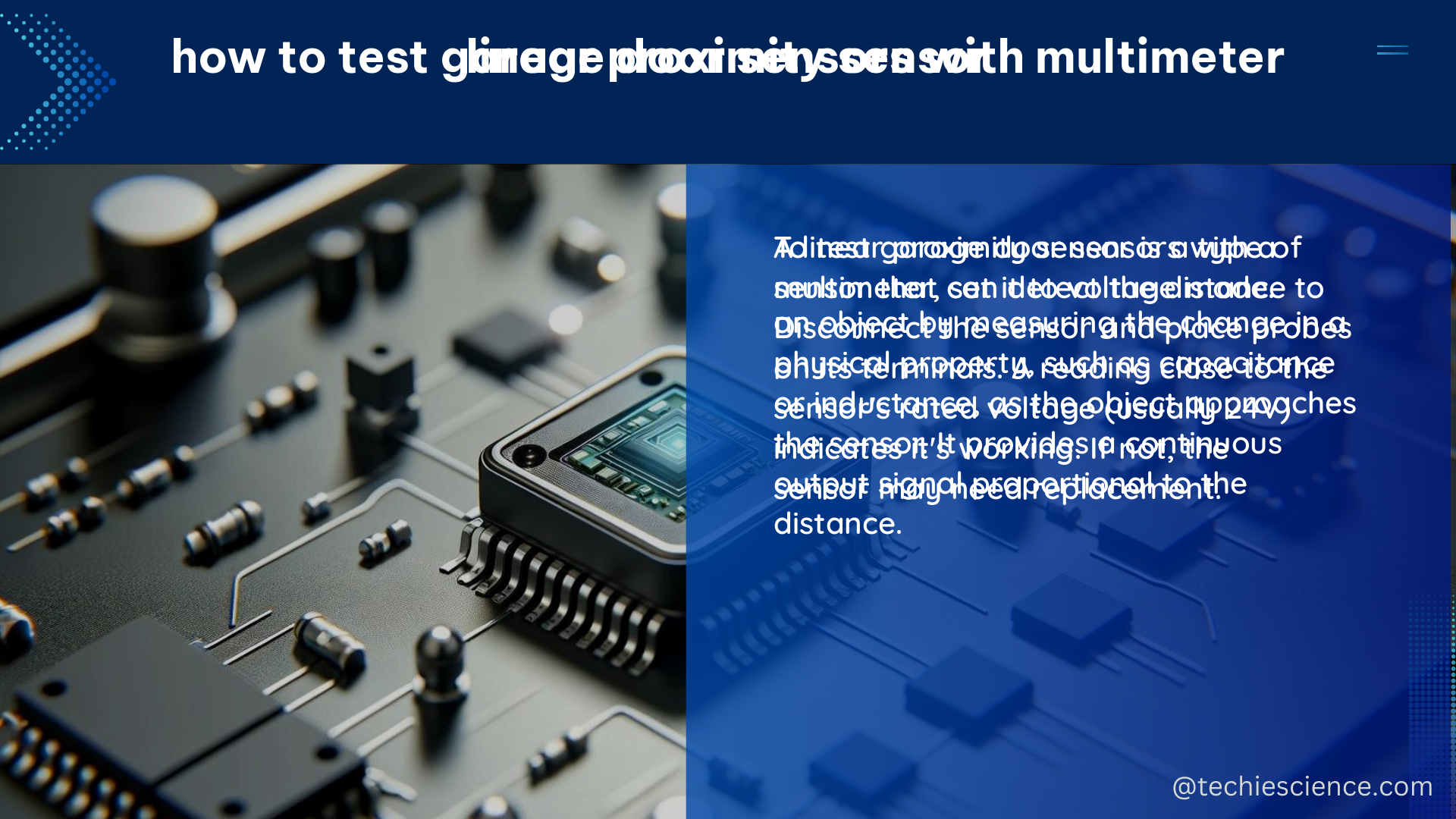Linear proximity sensors are essential components in various industrial and technological applications, enabling the detection of the presence and position of objects without physical contact. These sensors utilize different sensing technologies, such as inductive, capacitive, ultrasonic, and optical, each with its unique advantages and limitations. In this comprehensive guide, we will delve into the technical specifications of inductive linear proximity sensors and provide a step-by-step DIY approach to working with these versatile devices.
Technical Specifications of Inductive Linear Proximity Sensors
Operating Principle
Inductive proximity sensors operate based on the principle of electromagnetic induction. When a conductive object, such as a metal, enters the sensor’s sensing range, it induces a magnetic field that is detected by the sensor, triggering an output signal. This non-contact detection mechanism makes inductive proximity sensors ideal for applications where physical contact with the target object is undesirable or impractical.
Sensing Range
The sensing range of an inductive linear proximity sensor is typically between 0.5 mm and 100 mm, depending on the sensor’s specific design and operating frequency. Factors such as the size, shape, and material of the target object, as well as the sensor’s coil size and operating frequency, can influence the effective sensing range. Higher-frequency sensors generally have a shorter sensing range but offer improved accuracy and immunity to interference.
Output Signal
Inductive proximity sensors can provide either a digital or an analog output signal. Digital sensors typically offer a NPN or PNP transistor output, which can be easily interfaced with microcontrollers or other digital logic circuits. Analog sensors, on the other hand, provide an output voltage or current proportional to the sensed object’s distance, allowing for more precise distance measurement and control applications.
Operating Frequency
The operating frequency of inductive proximity sensors typically ranges from a few hundred kHz to several MHz. Higher frequencies generally result in a shorter sensing range but improved accuracy and immunity to electromagnetic interference (EMI). The choice of operating frequency depends on the specific application requirements, such as the desired sensing range, resolution, and environmental conditions.
Temperature Range
Inductive proximity sensors are designed to operate in a wide temperature range, typically from -40°C to +85°C. This wide temperature tolerance makes them suitable for a variety of industrial and outdoor applications, where environmental conditions can be challenging.
Environmental Protection
Inductive proximity sensors are often designed with robust housing and sealing to protect against dust, moisture, and other environmental factors. The IP (Ingress Protection) rating system is used to classify the level of environmental protection provided by the sensor, with higher ratings indicating better protection against ingress of solids and liquids.
DIY Approach to Linear Proximity Sensors

For those interested in working with linear proximity sensors, a DIY approach can be both educational and rewarding. Here are the steps to get started:
1. Choose a Sensor
Select an appropriate inductive proximity sensor based on your specific requirements, such as the sensing range, output signal, and environmental protection. Consider factors like the sensor’s size, mounting options, and compatibility with your microcontroller or control system.
2. Read the Datasheet
Carefully study the sensor’s datasheet to understand its electrical characteristics, pin configurations, and recommended operating conditions. Pay close attention to the power supply requirements, output signal specifications, and any special considerations for installation and use.
3. Connect the Sensor
Properly connect the inductive proximity sensor to your microcontroller or other controlling device using the recommended wiring and electrical specifications. Ensure that the sensor is grounded correctly and that the power supply meets the sensor’s requirements.
4. Program the Microcontroller
Write a program to read the sensor’s output signal and interpret it according to your application’s requirements. This may involve converting an analog signal to a digital value, filtering noise, or calibrating the sensor for optimal performance. Consider using libraries or example code provided by the sensor manufacturer to simplify the programming process.
5. Test and Calibrate
Perform thorough testing to ensure the inductive proximity sensor is functioning correctly. This may involve moving a conductive target object through the sensor’s sensing range and verifying the output signal. Calibrate the sensor as needed to achieve the desired accuracy and repeatability, adjusting parameters such as sensitivity, output threshold, or detection distance.
By following these steps, you can successfully integrate inductive linear proximity sensors into your DIY projects and gain a deeper understanding of their inner workings and practical applications.
References
- Guo, Y.-X., Shao, Z.-B., & Li, T. (2016). An Analog-Digital Mixed Measurement Method of Inductive Proximity Sensor. Sensors, 16(1), 30.
- Müller, J., Meneses, J., Humbert, A. L., & Guenther, E. A. (2020). Sensor-based proximity metrics for team research. A validation study across three organizational contexts. Sensors, 20(16), 4462.
- Jagiella, M., Fericean, S., & Dorneich, A. (2006). Progress and recent realizations of miniaturized inductive proximity sensors for automation. IEEE Sensors Journal, 6(6), 1734-1741.
- Pepperl+Fuchs. (n.d.). Inductive Proximity Sensors: Operating Principle and Applications. Retrieved from https://www.pepperl-fuchs.com/global/en/classid_1527.htm
- Balluff. (n.d.). Inductive Proximity Sensors: Technical Information. Retrieved from https://www.balluff.com/en-us/products/inductive-proximity-sensors/technical-information

The lambdageeks.com Core SME Team is a group of experienced subject matter experts from diverse scientific and technical fields including Physics, Chemistry, Technology,Electronics & Electrical Engineering, Automotive, Mechanical Engineering. Our team collaborates to create high-quality, well-researched articles on a wide range of science and technology topics for the lambdageeks.com website.
All Our Senior SME are having more than 7 Years of experience in the respective fields . They are either Working Industry Professionals or assocaited With different Universities. Refer Our Authors Page to get to know About our Core SMEs.